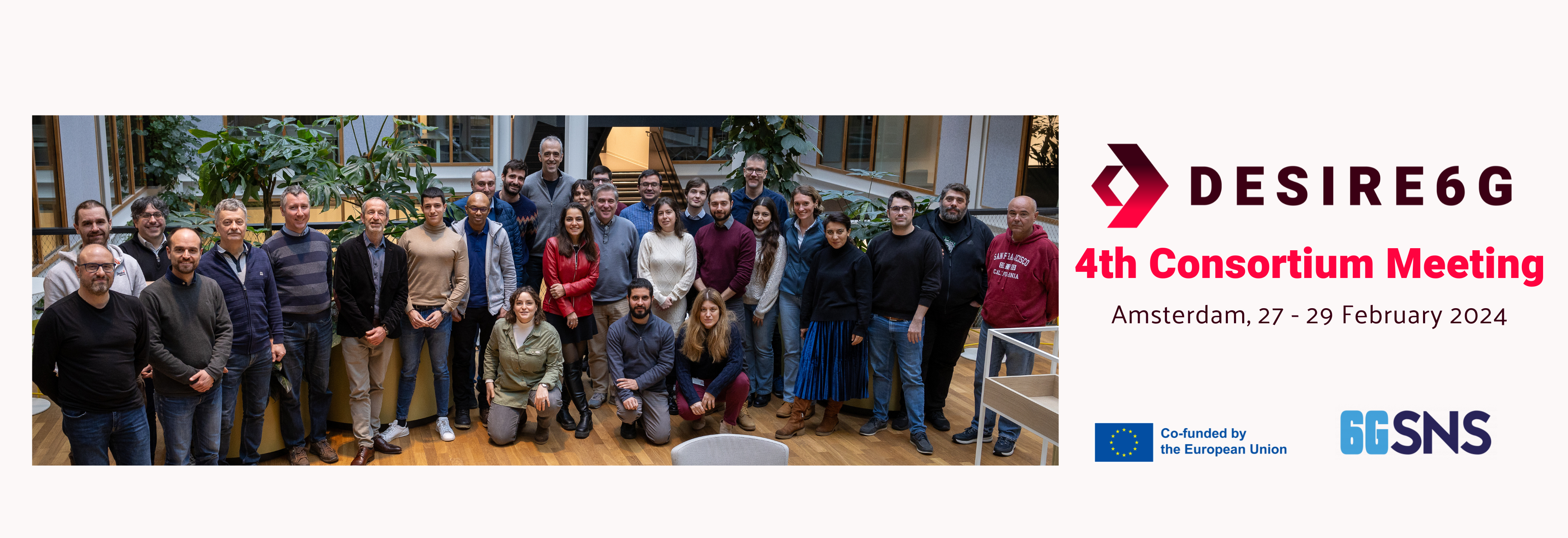Last week, from 27 to 29 February 2024, the DESIRE6G consortium convened in Amsterdam for a fruitful plenary meeting, moving towards the project’s halfway point with significant momentum. Below we share the progress across work packages.
WP 2
- Architecture: A collaborative effort led to finalizing architectural open points, and the development of a new version of message workflows, enhancing architectural clarity and understanding among partners.
- Technical Discussions:
- Syncing KPIs, refining dataset identification methodologies, and establishing techno-economic benchmarking plans. Integration of Federated Learning for Distributed Training Use Cases (DT UC) was explored.
- Review of expected IBM interfaces, emphasizing the need for agreement on interface types (YAML, JSON, RDF) between IBM, SO, and optimization framework.
- Mapping of D6G architecture to ORAN architecture, with plans to extend the analysis to other parts of the architecture.
- Discussions delved into MAS agent deployment, telemetry architecture, and standardization efforts.
WP 3
- Defining interfaces for SMO components to ensure seamless integration and interoperability within the system architecture.
- Outlining algorithms and functionalities to be incorporated into SMO components.
- Progressing initial prototypes of modules slated for the first software release (MS3.2) by the end of March.
- Identifying opportunities for standardization and open-source collaboration.
- Clarify the scope of WP3 contributions to scheduled demos, detailing what is currently implemented, planned enhancements, and alignment with WP5 objectives for cohesive demonstrations.
WP 4
- Advancements in accelerating Network Functions (NFs), telemetry functions, and INT headers were discussed. Identification of standardization and open-source assets was underscored.
- Detailed discussions centered on digital path descriptions for main demos, including AR, video surveillance, and digital twin applications.
- Hardware acceleration and telemetry architecture were also discussed, along with plans for standardization and open-source assets.
WP 5
- Proof of concepts for various demos, including AR, digital twin, and image monitoring.
- Defining workflows, scenarios, and partner responsibilities for EuCNC demos, along with plans for poster submissions.
- Means of validation for KPIs were discussed, as well as mapping KPIs to components.
- Initiatives related to standardization and open-source assets were initiated, ensuring alignment with project objectives and to ensure project sustainability.
WP 6
- Agreed procedures, EuCNC 2024 participation, and preparations for the first technical review were key discussions.
- Deadlines for deliverables D6.3 and D6.4 were set, the reports on Communication, Dissemination and Exploitation activities.
- Special attention was given to open science obligations, setting up new improved processes for dataset archiving and reporting.
The consortium’s collaborative efforts and commitment are behind the great progress of DESIRE6G. Stay updated on our social media channels as we continue to share our results and upcoming events!
